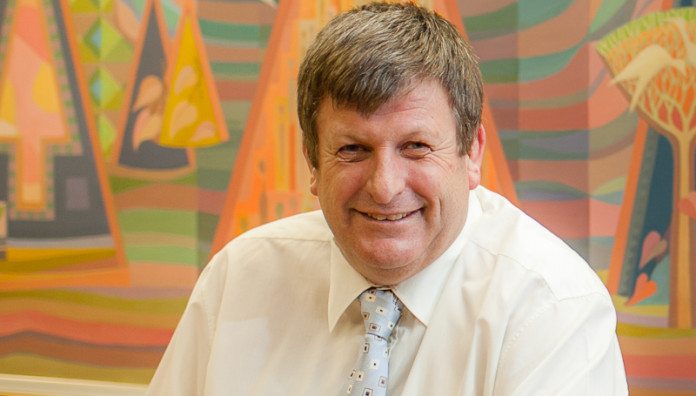
HARMONY Gold will pay a 50 cents/share dividend – its first in four years – and in a statement of intent amid a stirring in the gold market it said it would lift gold production to 1.5 million ounces a year in three years.
Including the mines it intends to harvest – equal to some 220,000 oz from Kusasalethu, Masimong and Unisel – Harmony’s growth plan translates into a 70% lift on the 1.08 million oz in produced in its 2016 financial year. It planned to mine 1.05 million oz in the current (2017) financial year.
Reporting full-year figures ended June today, the group said it would grow production through organic expansions and through acquisition. Asked in a media call for details, Peter Steenkamp, Harmony CEO, said it was too early to communicate specifics. “It’s an aspiration that we’ve got,” he said.
“We have identified specific targets we would like to pursue in three areas in South Africa, the rest of Africa, and Papua New Guinea (PNG).
“We don’t have anything more to share as nothing has progressed that we can communicate. But it will be through acquisitions and not just through organic growth,” he added.
Harmony reported a R1.79bn turnaround in headline earnings for the 12 month period of R964m year-on-year whilst headline share earnings came in at 221 cents compared to a loss of 189 cents in the 2015 financial year.
The improvement was driven by a 21% improvement in the average rand gold price which offset a 4% decline in the average dollar gold price during the year.
Cost increases were lower than inflation, with all-in sustaining cost (AISC) for all operations increasing by only 3% to R467 526/kg compared to R453 044/kg in Harmony’s 2015 financial year.
Total cash generated in the period was R4.5bn which, after costs, allowed for a 54% reduction in net debt to just over R1bn. This left the group with R1.3bn in cash and some R3.4bn in debt facilities available which compares to facilities of R900m a year ago and cash of R1.1bn.
The improved cash flow also made room for the payment of the dividend of 50 cents/year which the group said was “prudent”. It represents a 0.8% dividend yield.
“We continue to have a positive view on the strength of the gold price, with cash certainty being key in times of extreme market volatility,” the company said in its published results.
However, with the rand having strengthened against the dollar in the last few months, analysts said “headwinds” were developing for Harmony Gold.
Including “… pent-up capital expenditure and exploration expenditure likely to come back, we see a high risk of margins contracting from here,” said Johann Steyn, an analyst for Citi.
KUSASALETHU
Steenkamp said as part of the firm’s production plans, it had decided to mine only the high grade section of Kusasalethu, the west Rand operation that produced 124,198 oz in the year (2015: 127,092 oz).
This meant the operation’s life of mine was reduced to five from 24 years as there was little chance of it making a profit whilst mining the lower grade areas, even in the current market. Kusasalethu employs about 4,500 people.
“We are looking at harvesting the mine in the next five years,” he said. “There is one proviso in that we are doing an optimisation study to push it [life of mine] out further. I don’t think we have the margins there and I don’t want to put more capital into Kusasalethu,” Steenkamp said.
The cut in the life of mine at Kusasalethu was largely the reason for a 35.7% decrease in Harmony’s mineral reserves at its underground South African mines falling to 9.7 million oz from 15 million oz as of end-June, 2015.
“The shorter life of mine plan at Kusasalethu optimises the mine’s cash flow at a higher grade and creates a much stronger margin, providing us with the option to consider the feasibility to access the high grade VCR payshoot below infrastructure in the future,” the company said in its published results.








